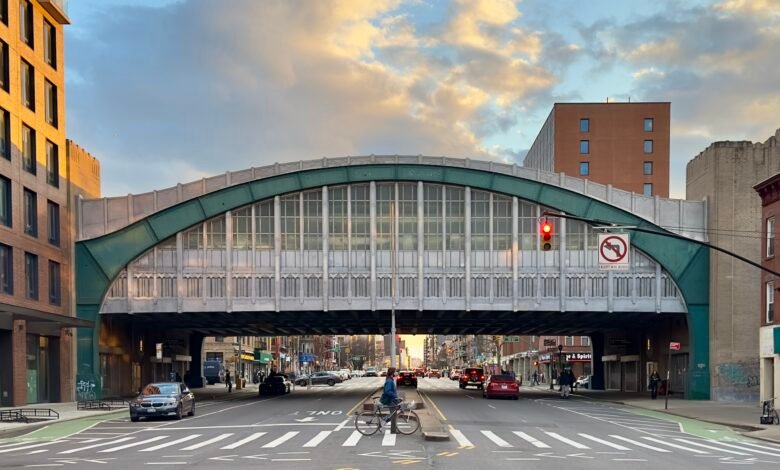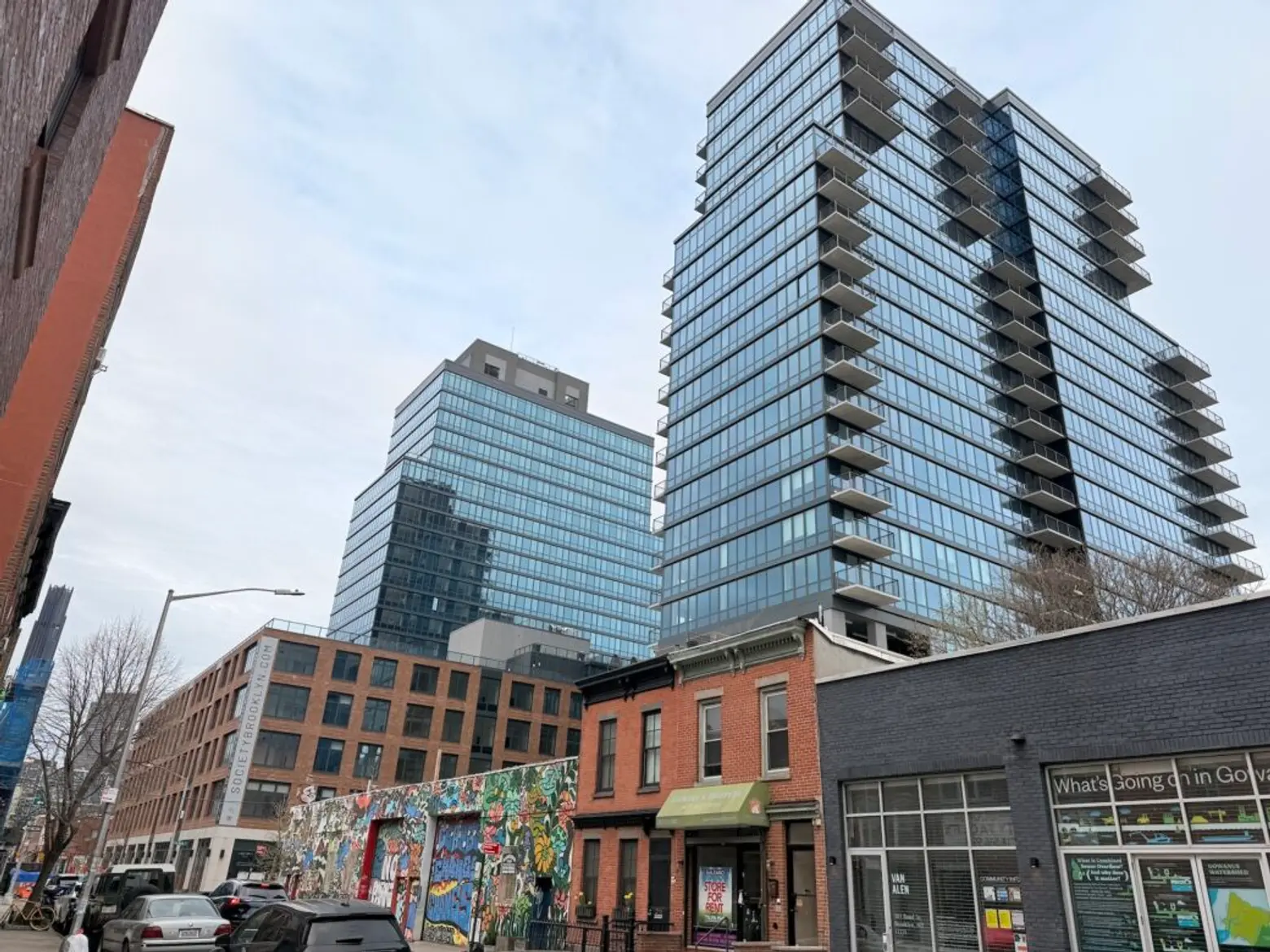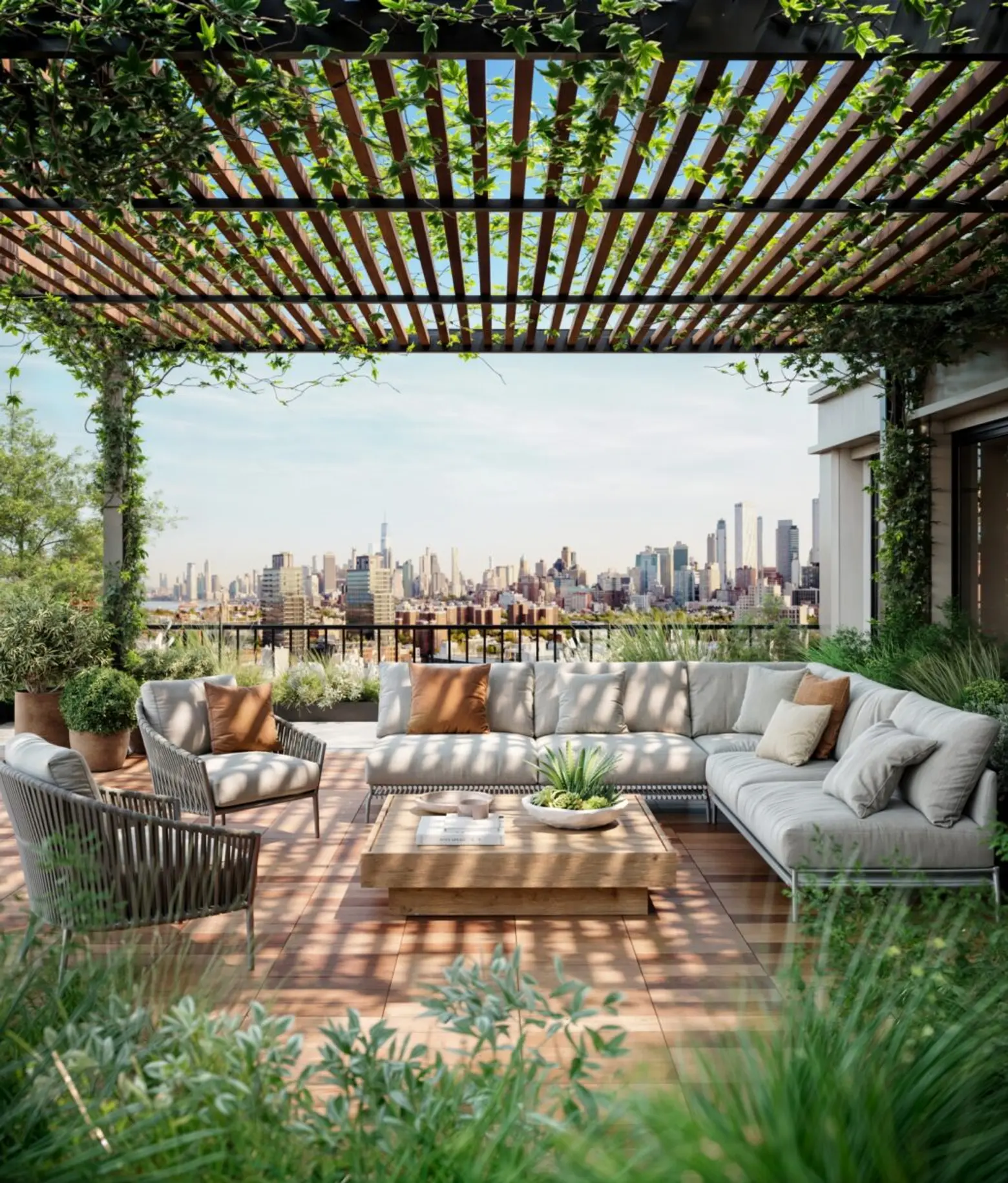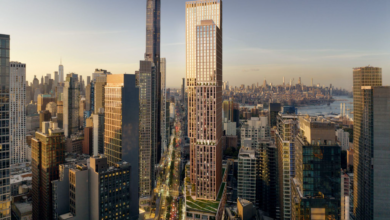How Gowanus went from eyesore to eye-popping prices


It’s been 20 years since The New York Times reported that city officials voted “to let developers turn the decaying north Brooklyn waterfront, with its relics of Brooklyn’s industrial past, into a neighborhood of residential towers with a parklike esplanade along the East River.” In the two decades since, this version of Williamsburg was replaced by the first generation of “hipsters,” glassy condo towers with Manhattan views, and throngs of Manhattanites crowding the L train to hit up Union Pool and Maison Premiere.
Now, a new rezoning is putting another Brooklyn neighborhood on the same path. This time, the waterfront is the once-toxic Superfund-designated Gowanus Canal.

Approved in late 2021, the Gowanus rezoning covers 82 blocks and includes a plan to bring 8,500 housing units (3,000 of them affordable), new parkland, and four acres of waterfront space to the neighborhood.
This time last year, 420 Carroll, the first development under the upzoning, launched leasing for its luxury rental units, with studios starting at nearly $4,000 a month. Since then, it’s been a steady stream of openings and announcements.
“I see the Gowanus rezoning as a major opportunity for thoughtful growth in Brooklyn. The neighborhood has always had a creative, industrial edge, and the rezoning opens the door for new residential and mixed-use projects while also investing in infrastructure and environmental improvements,” shares Donald Brennan, Engel & Völkers license partner.
“If done responsibly, it can bring much-needed housing and create a vibrant, more connected community without losing the character that makes Gowanus unique.”
Ahead, real estate experts break down the neighborhood’s transformation and answer the question: Is Gowanus the new Williamsburg?
An extension of Park Slope…eventually

Robert Elson, an agent with Coldwell Banker Warburg, admits it’s taking time for his clients to warm up to the idea of living in Gowanus, a neighborhood so synonymous with a toxic canal.
“No one wants to be first,” he says. “We have to wait a bit to see how this shakes out.”
Alex Saltalamacchia, who runs BOND New York’s Brooklyn office, has had a similar experience: “Some buyers and renters have expressed hesitation in the past, largely due to environmental concerns. But as cleanup efforts continue and development progresses, many are starting to see Gowanus through a new lens.”
However, Louis Adler, co-CEO and co-founder of REAL New York, says that he’s seeing young professionals and creatives “comparing it to the early days of Williamsburg or Long Island City, except this time with more intentional planning and infrastructure.”
“The environmental cleanup combined with smart, mixed-use zoning creates a rare opportunity to thoughtfully expand New York City’s housing supply,” Adler notes. “It’s one of the few places in the five boroughs where the city can build at scale in a way that’s modern, sustainable, and responsive to community needs.”
This said, many of the brokers we spoke with shared that their clients are eventually coming around to Gowanus as an alternative to some of the long-popular surrounding neighborhoods.
“Buyers who might have only considered Park Slope, Carroll Gardens, or Boerum Hill are now seeing Gowanus as an extension of those neighborhoods with its own personality,” explains Brennan. “They love the proximity to the canal-side green spaces and new restaurants.”

A solid investment
For some buyers, Gowanus’ appeal boils down to an investment opportunity.
“Gowanus is one of the last central Brooklyn neighborhoods to undergo a major transformation, and we’re just at the beginning of that curve,” notes Adler. “As the residential inventory grows and the canal cleanup continues, we’re going to see stronger pricing power, sustained demand, and an increasingly dynamic retail and cultural ecosystem.”
Saltalamacchia agrees that Gowanus is “one of the most compelling investment opportunities in New York City right now.”
“It’s rare to find an area with such significant long-term infrastructure investment—combined with rezoning, environmental remediation, and a vibrant cultural identity,” he says. “The neighborhood also offers excellent access to subways.”
As far as condos go, Brennan points out that their value will be tied to how many rental developments currently exist in Gowanus: “Owning an asset in a supply-constrained submarket is never a bad idea.”
This notion isn’t just anecdotal, either.
“In the last 12 months, the median price for Gowanus sales was $1.52 million, compared to $1.32 million for homes sold in 2019, an 18% increase,” reports John Walkup, co-founder of the real estate data analytics firm UrbanDigs.
“While this lags some of the neighboring areas like Cobble Hill (+45%), Boerum Hill (+35%), and Park Slope (+27%), it does suggest that a developed (and thriving) Gowanus could be part of the next chapter of Brooklyn’s resurgence, even if there will likely be short-term volatility.”

Focus on amenities
Given that many developments in Gowanus were planned during the pandemic, it’s not surprising that there’s a strong focus on outdoor space and amenities. It’s also fair to assume that developers are leaning on these perks to sway renters and buyers who are on the fence about the neighborhood.
Joe Porritt, leasing director at 499 President, a ten-story, 350-unit rental in the neighborhood, tells 6sqft that the development focused its amenity program on what makes Gowanus unique: “Plenty of green spaces to enjoy, coworking lounges that support Brooklyn’s creative professionals, and social areas designed to bring people together.”
This includes a rooftop pool and lounge, a fitness center with a yoga studio, a golf simulator, a pet wash station, and more. Renters also have the option to secure furnished units through a partnership with The Everset.

Adler points to 544 Carroll Street, a 133-unit rental currently listing a $25,000/month duplex, and Gowanus Wharf as developments to watch.
The latter is being developed by Charney Companies and Tavros and will include one million square feet spread across four sites. For 175 Third Street, starchitect Bjarke Ingels Group (BIG) designed a 27-story, 1,000-unit rental, including 250 affordable units, with retail and artist spaces on the ground floor.
“It’s not just about residential units. It’s about placemaking,” says Adler. “These developments are thinking beyond just leasing apartments. They’re curating amenities, ground-floor retail, and open space that will shape the identity of Gowanus for years to come.”
To his point, 175 Third Street will offer residents a rooftop terrace with Manhattan skyline views, outdoor pool, and, most impressively, a canal-facing park with a 37,000-square-foot waterfront esplanade.
Likewise, 420 Carroll Street boasts a new public promenade along the canal, co-working spaces, multiple outdoor green spaces, a fitness center, and more. The development consists of a 21-story and a 16-story tower connected by an underground tunnel.

Society Brooklyn, a pair of 21-story rental towers, has its own waterfront esplanade, as well as an outdoor heated pool and rooftop terrace.
So, is Gowanus the next Williamsburg?
“What really sets Gowanus apart is its mix of old and new. You have historic warehouses and artist studios next to sleek new developments, plus the canal itself, which is getting cleaner and greener every year,” shares Brennan.
“It’s a neighborhood with character and culture, and it still feels like it’s in the midst of an exciting transformation. People are drawn to that energy you feel like you’re part of something that’s growing and changing.”
Source link

